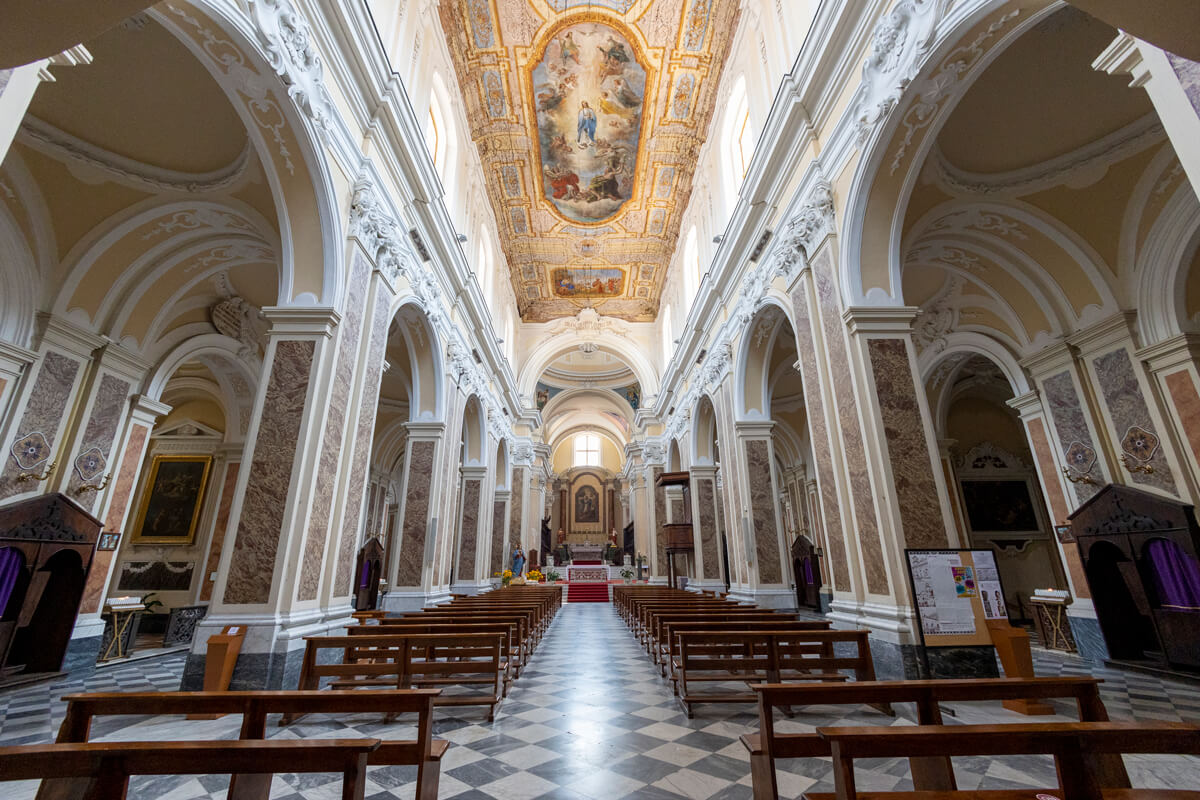The church is built according to the canons of Gothic art, and has undergone extensive modifications and significant disfigurements over time.
The date of foundation is unknown: in the first thirty years of the 14th century, however, the church does not appear in the list of those who pay tithes to the Papal State, so it is possible that it was built in the mid 14th century.
Documents from the early years of the 18th century attest that the church, covered with “gilded beams”, is 70 palms long and 40 wide, with four chapels on the right dedicated to St. John of God, St. James the Apostle, the Pietà and the Holy Saviour, and two on the left dedicated to St. Roch and St. Blaise.
Between 1725 and 1740, the Annunziata underwent a revolution in its architectural layout: the “gilded beams” roof was replaced by a barrel vault with plaster squares (in the centre, the painter Giovanni Cosenza inserted a painting of the Annunciation) while the frescoed walls were attacked, with light openings in the apse and on the counter façade. In 1763, the church was adorned with a marble portal: the lunette of the bas-relief depicts the Annunciation. In 1764, Monsignor de Liguori erected the church as a parish seat, and between 1770 and 1780, Scipione Mustilli‘s work was carried out to make the architectural structure more elegant. Despite the 1805 earthquake, the Annunziata was not restored by architect Raffaele Mosera until 1865.
This intervention irreparably sacrificed part of the frescoes. It was only the restorations from 1973 to 1977 that brought back the 15th-century paintings: a series of beautifully executed frescoes depicting the theme of the Annunciation and scenes from the lives of the Saints, by unknown authors.
Of particular note is the fresco depicting the Last Judgement dating back to the 15th century, an expression of the international Gothic style operating in Campania: some have attributed it to Ferrante Maglione, others to a master called ‘Maestro Marco’.
Painted on the west side of the building, where symbolically the setting sun illuminates the great scene of the last night of the world.
In 1976, the painter Bruno Cassinari designed and donated a series of stained-glass windows to the church, which suffused the ecclesiastical layout with warm tones
Where is located
Largo Annunziata, 6
next to Piazza Tiziano Della Ratta
Original destination
Current destination


The Church of the Carmine in the square of the same name is at a focal point in the historical centre, halfway between the Ducal Castle and the Cathedral.
The floor covering the church is the oldest of its kind in southern Italy, dating from around 1098: the lithostratum consists of 50 squares.
Almost as if to emphasise its sumptuousness, the atrium still forms a kind of caesura in the urban layout of the city, interrupting the main street at one point.


































